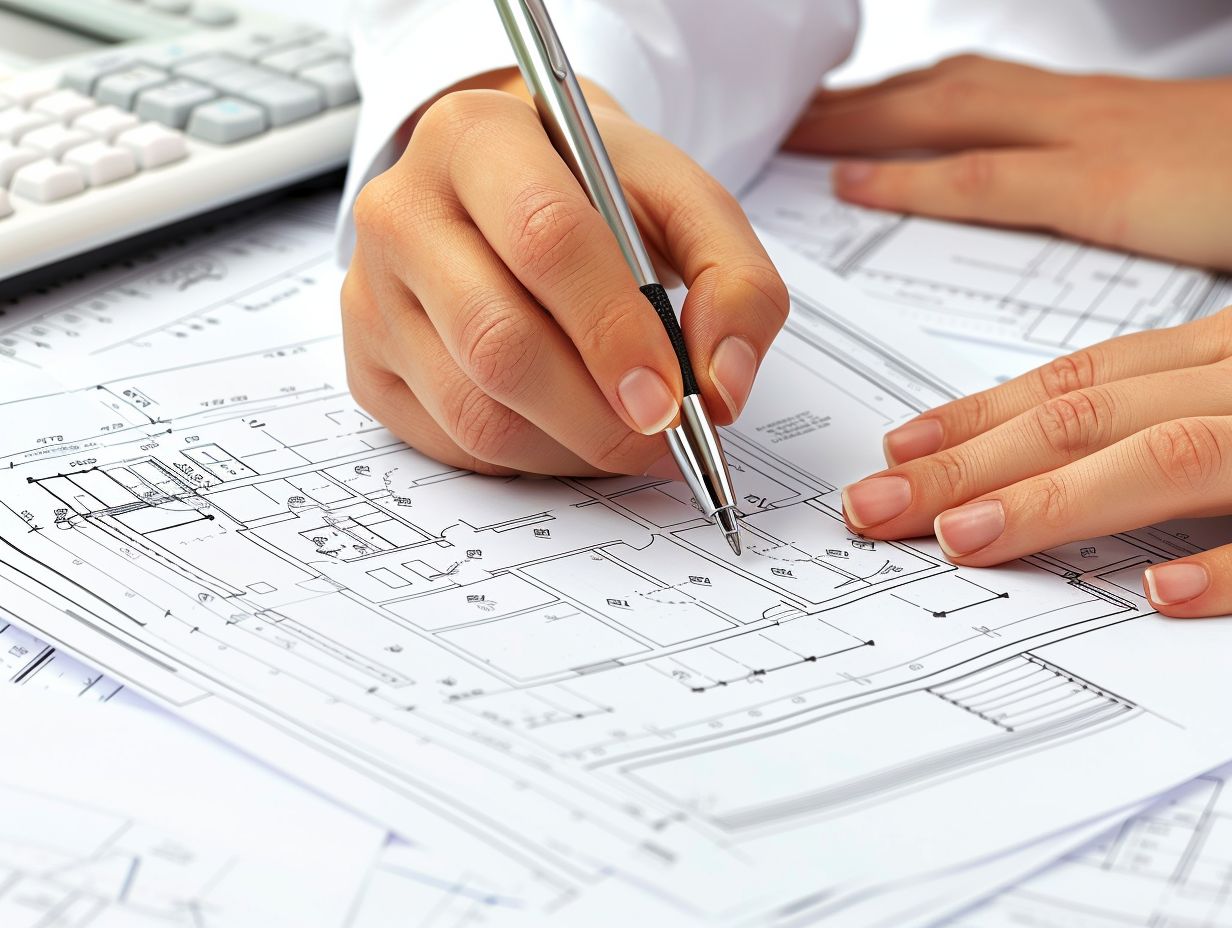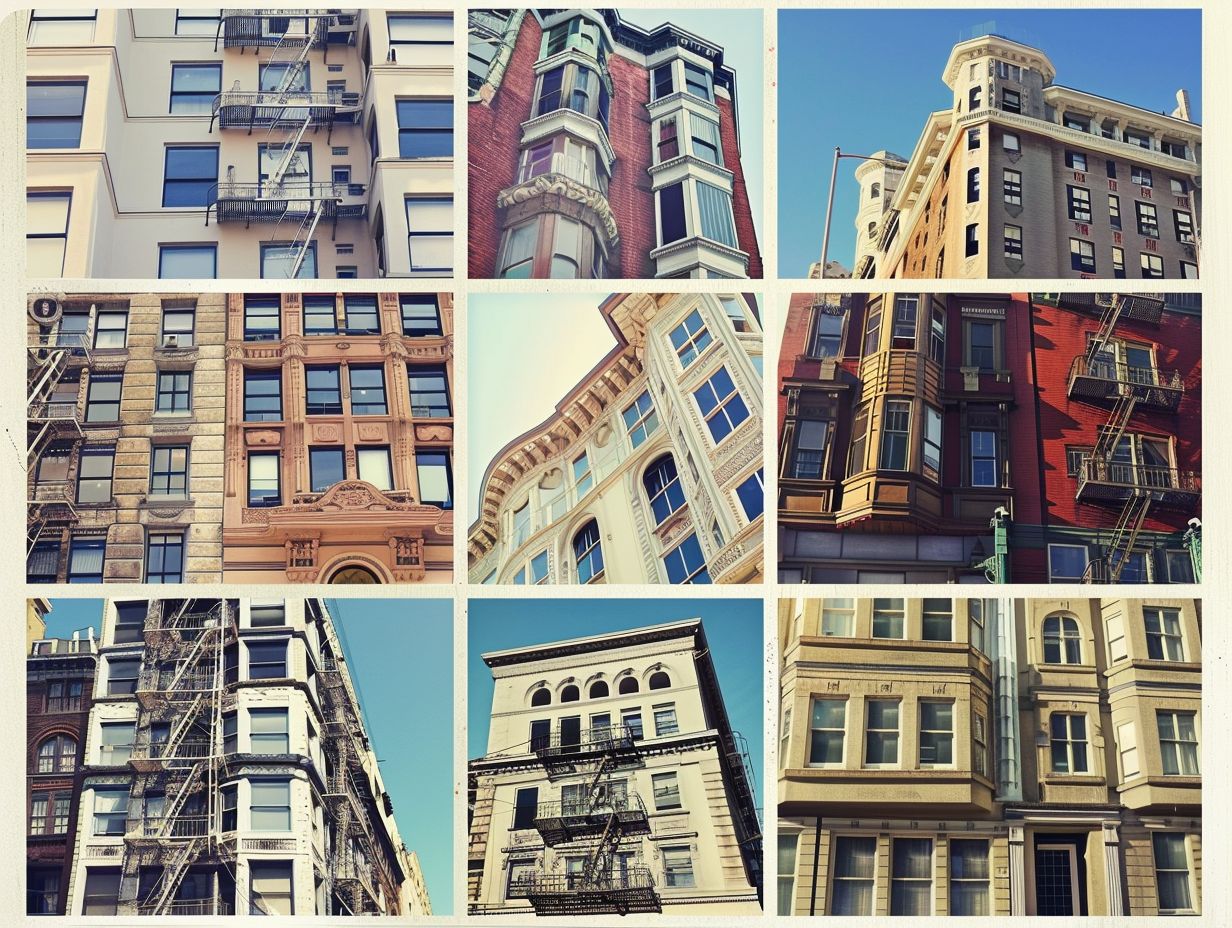
Upgrading Older SF Homes for Earthquake Resilience
In earthquake-prone regions like San Francisco, older homes are particularly susceptible to damage and pose significant risks to occupants during seismic events. Structural damage, fire hazards, and gas leaks are just a few of the potential dangers that older SF homes face. There are ways to upgrade these homes to enhance their earthquake resilience. From foundation strengthening to securing furniture and appliances, homeowners have a range of options to protect their properties and occupants.
In this article, we will delve into the importance of earthquake resilience for older SF homes, the risks they face during earthquakes, methods for upgrading their resilience, the benefits of doing so, and avenues for obtaining financial assistance for these upgrades. Whether you’re a homeowner in San Francisco or simply interested in the topic, this comprehensive guide will provide valuable insights into safeguarding older homes against earthquake risks.
Why is Earthquake Resilience Important for Older SF Homes?
Earthquake resilience is crucial for older SF homes as they are particularly vulnerable to seismic risks and require retrofitting to mitigate potential hazards and ensure structural integrity.
These older homes, often built before modern seismic building codes, are more susceptible to damage during earthquakes due to their brittle materials and lack of reinforcement. Retrofitting involves incorporating measures such as installing foundation anchoring, reinforcing walls, and securing heavy furniture to prevent collapse.
Seismic risk assessment plays a pivotal role in identifying vulnerabilities and determining the most effective mitigation strategies, thus emphasizing the need for proactive measures to safeguard these homes and their occupants.
What are the Risks for Older SF Homes during an Earthquake?
Older SF homes face various risks during an earthquake, including structural damage, fire hazards, and potential gas leaks, necessitating vulnerability assessment and the implementation of effective retrofit strategies to meet safety standards.
In the event of an earthquake, the aging infrastructure of these homes may not withstand the intense shaking, leading to significant structural damage. Outdated electrical wiring and heating systems in older homes can pose a heightened risk of fire, especially when combined with the impact of an earthquake. Aging gas lines in these properties may be more susceptible to damage, increasing the potential for hazardous gas leaks. It is imperative to have these homes evaluated for vulnerabilities and undertake necessary retrofit measures to mitigate these risks and ensure the safety of residents.
Structural Damage
Structural damage in older SF homes during earthquakes can be mitigated through seismic upgrades, retrofitting techniques, and the use of seismic reinforcement with resilient building materials to ensure seismic strengthening.
These seismic upgrades can involve the installation of foundation bolting, shear wall bracing, and roof-to-wall connections to enhance the structure’s resistance to seismic forces. Retrofitting methods such as adding steel frames, strengthening weak walls, and enhancing floor diaphragms are crucial in improving the overall seismic performance of older homes.
Seismic reinforcement techniques may also include utilizing advanced building materials such as fiber-reinforced polymers, carbon fiber wraps, and special concrete mixes to increase the resilience of the structure during seismic events. Incorporating these seismic strengthening measures can significantly reduce the vulnerability of older homes in San Francisco and other earthquake-prone regions.
Fire Hazards
Fire hazards in older SF homes during earthquakes necessitate comprehensive home renovation, including seismic retrofit measures, to meet safety standards and effectively mitigate potential risks through hazard mitigation and seismic reinforcement.
This is especially crucial for older homes in San Francisco due to their vulnerability to structural damage during seismic events. By retrofitting these homes with reinforcements such as anchor bolts, shear walls, and bracing connections, the risk of fire hazards can be significantly reduced. Updating electrical systems and incorporating fire-resistant materials can further enhance the safety and resilience of these homes, ensuring the well-being of residents and protecting the integrity of the community.
Gas Leaks
Gas leaks in older SF homes during earthquakes can be addressed through effective retrofit solutions, emphasizing seismic risk reduction, seismic reinforcement, and the implementation of seismic retrofitting methods, including foundation stabilization.
This is particularly crucial for older homes in San Francisco, where the risk of gas leaks during earthquakes is heightened due to aging infrastructure. Retrofit solutions such as gas shut-off valves, flexible gas piping, and automatic seismic gas shut-off valves can greatly minimize the potential for gas leaks.
Seismic reinforcement of structural elements, like anchoring gas appliances and securing gas lines, can significantly reduce the risk of gas leaks and ensuing fire hazards during seismic events. These retrofit measures provide essential protection for both property and personal safety in earthquake-prone areas.
How Can Older SF Homes be Upgraded for Earthquake Resilience?
Older SF homes can be upgraded for earthquake resilience through retrofitting measures such as foundation strengthening, reinforcing walls, and securing furniture and appliances, thereby enhancing seismic reinforcement for improved structural integrity.
These retrofitting techniques involve comprehensive assessments of the existing foundation, which may include adding steel reinforcements or installing seismic base isolators. Reinforcement of walls can be achieved through the application of structural materials such as steel mesh or fiber-reinforced polymers.
Securing furniture and appliances within the home can be facilitated with the use of specially designed straps and brackets to prevent movement during seismic events, minimizing the risk of damage and ensuring safety for inhabitants.
Foundation Strengthening
Foundation strengthening is a critical aspect of upgrading older SF homes for earthquake resilience, involving seismic upgrades and retrofit techniques using advanced construction techniques to mitigate seismic risk.
It is essential to understand that older homes in San Francisco are particularly vulnerable to earthquake damage due to their construction methods and materials. Strengthening the foundation through retrofitting and innovative construction methods is crucial for ensuring the structural integrity of these buildings during seismic events. By incorporating seismic upgrades such as foundation bolting, cripple wall bracing, and shear wall reinforcement, homeowners can significantly reduce the risk of damage and potential collapse in the event of an earthquake. These techniques work hand in hand to improve the overall seismic performance of older homes, making them safer and more resilient to seismic hazards.
Reinforcing Walls and Roofs
Reinforcing walls and roofs in older SF homes is essential for seismic reinforcement, involving retrofit solutions and construction techniques to enhance structural integrity and mitigate seismic risks through effective seismic strengthening.
It is crucial to consider the unique challenges posed by older homes, such as fragile structures and outdated construction methods, when undertaking seismic reinforcement. Retrofitting methods may include adding steel bracings, installing anchors, or using carbon fiber wrap to fortify walls and roofs against seismic forces.
Construction techniques like foundation bolting and cripple wall bracing are also commonly employed to secure the building’s stability. These measures not only protect residents and property but also contribute to the overall resilience of the community in the face of seismic events.
Securing Furniture and Appliances
Securing furniture and appliances in older SF homes is a crucial aspect of retrofitting for earthquake resilience, contributing to effective hazard mitigation and seismic reinforcement to ensure safety during seismic events.
It is essential to recognize that older homes in San Francisco are particularly vulnerable to damage during earthquakes due to architectural and structural factors. Securing heavy furniture, such as bookshelves and cabinets, can prevent them from toppling over and causing injury or damage. Anchoring appliances like water heaters and refrigerators can minimize the risk of gas leaks or electrical hazards. These measures play a significant role in safeguarding residents and property, making retrofitting an essential process for homeowners in earthquake-prone areas.
Installing Automatic Gas Shutoff Valves
Installing automatic gas shutoff valves in older SF homes is an effective retrofit solution for mitigating gas leaks during earthquakes and ensuring hazard mitigation with enhanced seismic reinforcement.
These valves can quickly detect seismic activity and automatically shut off the gas supply, reducing the risk of fire or explosion caused by gas leaks. With the ability to swiftly respond to potential hazards, they provide homeowners with peace of mind, especially in regions prone to earthquakes.
The installation of these valves aligns with the guidelines for improving the safety and structural integrity of older homes, making them an essential component of comprehensive retrofit solutions.
What are the Benefits of Upgrading Older SF Homes for Earthquake Resilience?
Upgrading older SF homes for earthquake resilience offers numerous benefits, including increased safety for occupants, protection of property, and a significant reduction in seismic risk, underscoring the importance of such initiatives.
By reinforcing the structural integrity of the house, homeowners can safeguard their families and belongings. These upgrades can also enhance the overall value of the property, ensuring a higher level of protection against potential damage caused by seismic activities. Investing in earthquake resilience not only provides peace of mind but also contributes to the long-term sustainability and durability of the home, making it a wise and practical decision.
Increased Safety for Occupants
The upgrade of older SF homes for earthquake resilience significantly enhances the safety of occupants, addressing vulnerabilities through seismic reinforcement and effective risk reduction strategies.
This essential upgrade not only ensures the structural integrity of the building but also provides peace of mind to residents, particularly in earthquake-prone regions. By conducting a thorough vulnerability assessment, potential weaknesses are identified and mitigated, reducing the likelihood of damage and protecting the well-being of those living in these homes. Implementing these measures not only safeguards the occupants but also contributes to the overall disaster resilience of the community at large.
Protection of Property
Upgrading older SF homes for earthquake resilience ensures the effective protection of property by mitigating seismic risk through retrofitting and comprehensive hazard mitigation, thus contributing to building resilience.
This proactive approach not only safeguards the structural integrity of buildings but also reduces potential repair costs in the event of an earthquake. Retrofitting measures, such as foundation bolting, bracing cripple walls, and securing chimneys, significantly enhance the ability of older homes to withstand seismic forces.
The promotion of building resilience emphasizes the need for integrating modern technologies and engineering advancements to fortify these structures, ultimately minimizing the overall impact of earthquakes on properties.
Reduced Risk of Injury and Death
The upgrading of older SF homes for earthquake resilience leads to a significantly reduced risk of injury and death, driven by effective seismic reinforcement, the implementation of retrofit solutions, and adherence to rigorous safety standards.
This critical role is underscored by the potential devastation that earthquakes can bring, especially in older structures. By prioritizing seismic reinforcement and adopting retrofit solutions, homeowners can strengthen their properties against seismic activity. Compliance with safety standards ensures that these upgrades are carried out effectively and reliably. It’s essential that older homes in earthquake-prone areas undergo these resilience measures to protect lives and property.
Mitigating the risk of injury and death through these actions is a foundational aspect of creating safer communities in earthquake-prone regions.
How Can Homeowners Obtain Financial Assistance for Upgrading?
Homeowners seeking financial assistance for upgrading older SF homes for earthquake resilience can explore various options, including the Earthquake Brace and Bolt Program, the Seismic Retrofit Incentive Program, and Federal Disaster Assistance Loans.
These programs aim to provide homeowners with the necessary financial support to make their homes more resilient to seismic activities. The Earthquake Brace and Bolt Program specifically offers grants of up to $3,000 to help cover the costs of retrofitting homes, while the Seismic Retrofit Incentive Program provides financial incentives for homeowners who seismically retrofit their homes.
Federal Disaster Assistance Loans are available to homeowners in the event of a federally declared disaster, providing low-interest loans for repairs and improvements to make homes more resistant to future earthquakes.
Earthquake Brace and Bolt Program
The Earthquake Brace and Bolt Program provides homeowners with financial assistance for seismic retrofitting, aimed at hazard mitigation and risk reduction through the reinforcement of residential structures.
This program offers homeowners the opportunity to strengthen their homes against seismic risks, ultimately enhancing safety and reducing potential damages in the event of an earthquake. By subsidizing the costs associated with retrofitting, the program empowers homeowners to proactively address the vulnerabilities in their properties, promoting community-wide resilience.
The seismic retrofitting carried out through this program not only protects individual homes but also contributes to the overall reduction of earthquake-related risks, making neighborhoods more secure and prepared for potential seismic events.
Seismic Retrofit Incentive Program
The Seismic Retrofit Incentive Program offers financial assistance to homeowners of older SF homes, promoting retrofit solutions and seismic reinforcement to enhance the earthquake resilience of residential properties.
This program aims to address the vulnerability of older homes in San Francisco by providing funding for retrofitting measures. It covers a wide range of retrofit solutions such as foundation bolting, bracing cripple walls, and securing chimneys. The goal is to mitigate potential damage from seismic events, protecting both the structural integrity of the homes and the safety of the occupants.
By incentivizing homeowners to invest in seismic retrofitting, the program plays a vital role in bolstering the overall resilience of the city’s housing stock.
Federal Disaster Assistance Loans
Homeowners can access Federal Disaster Assistance Loans to secure financial assistance for hazard mitigation, retrofitting endeavors, and seismic reinforcement aimed at enhancing the earthquake resilience of their residential properties.
These loans serve as a crucial resource for individuals looking to fortify their homes against potential earthquake damage. By utilizing these loans, homeowners can implement structural changes, such as foundation bolting, brace and bolt retrofits, and roof reinforcements, which are essential for increasing the structural integrity of their properties.
The funds acquired through these loans can be used for elevating or relocating the property to reduce flood risk, reinforcing walls, or improving the overall resilience of the home against natural disasters. This helps homeowners create a safer environment for themselves and their families, mitigating the financial and emotional toll that can result from earthquake-related damage.




No Comments